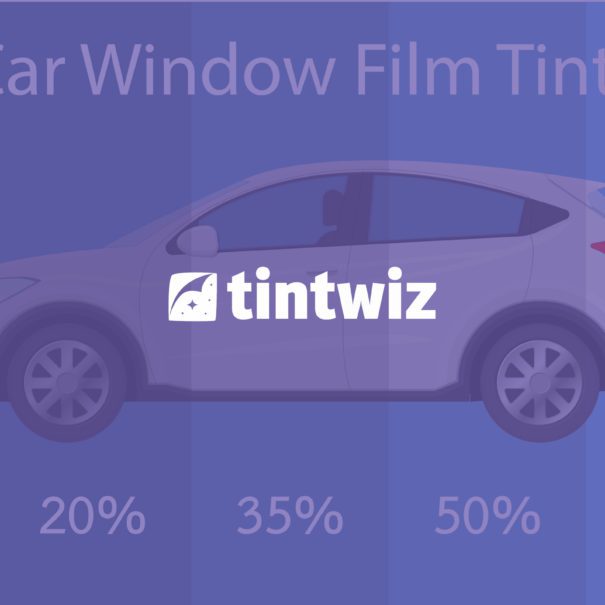A window film’s darkness is calculated based on how much of the spectrum of visible light the allows to pass through the tinted surface. The greater the volume of light it lets pass through, the higher the number rating of that tint, and the less the window tint blocks the view to the cabin of a vehicle.
A tint darkness rated at 70% means that the tinted window allows 70% of all visible light to pass through the window. This means in turn the tint rejects just 30% of the visible light. This is a very light tint option, and one that appears clear to many viewers. It nonetheless blocks almost all UV light, reduces the sun’s glare, and can keep a car cooler inside.
Window tint darkness precent is determined based on the window film’s Visible Light Transmission rating, usually abbreviated as the tint’s VLT rating. VLT is the amount of visible light a tint does not block, or in other words, how much light it lets shine through.
The bigger a window tint’s percentage rating, the clearer the window film is and the more light can pass through it. And the smaller the tint’s rating number, the darker the window tint is. A 95% VLT tint is almost as clear as untreated glass, whereas a 5% window film is almost fully black in appearance.
Is 70% tint dark?
No, 70% VLT tint is very light, and may not even be perceptible to some people, both inside and outside the vehicle.
Can you see through 70% tint at night?
Easily. Even after dark, 70% tint remains optically clear and easy to see through from inside the tinted car. If you are concerned about good visibility, reduced UV light and interior heat, and added privacy is not a major concern, this is a great tint choice.
Does 70 tint make a difference?
Yes, even though 70% tint is basically clear, a quality 70% tint will block a significant amount of heat from passing through. The dash and passengers are also protected from 99% of UV rays blocked by the 70% tint. And even though a 70% tint allows 70% of the light to pass through, the 30% of the light that is blocked does provide for a glass reduction that is noticeable to the driver.
What does 70% windshield tint look like?
70% tint for the most part is unnoticeable once installed. If compared side by side to a non-tinted window, you can then tell the difference, but on it’s own it appears clear. 70% tint often a have a bluish hue to them.







